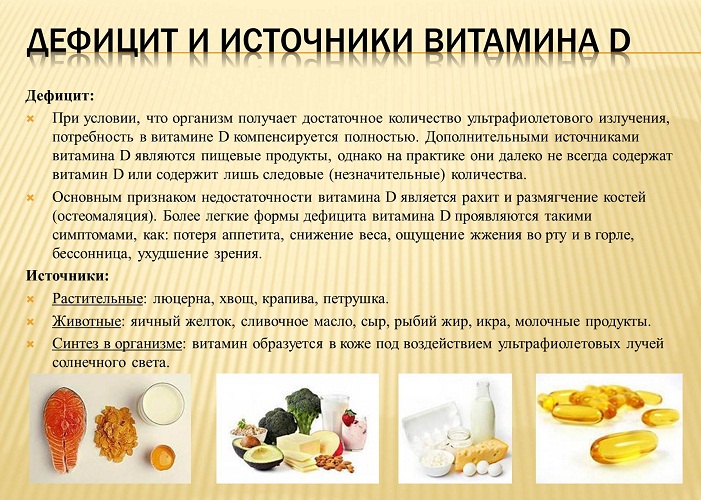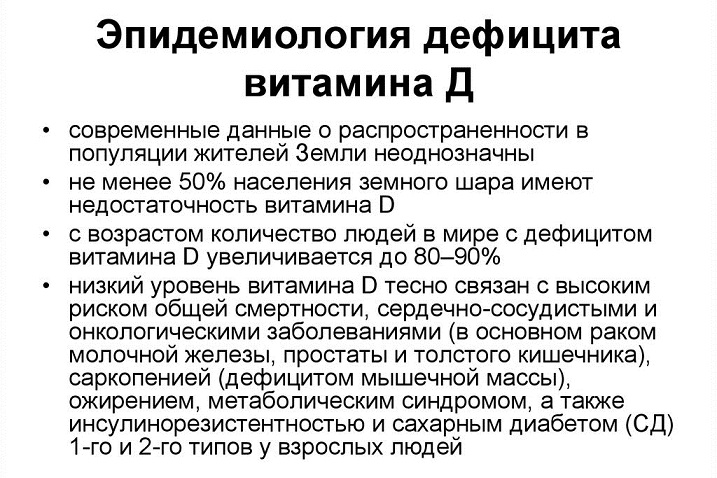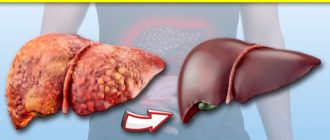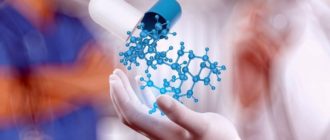This article will talk about products rich in vitamin D2 and D3.
Contents
- Vitamin D in products: What is their advantage?
- Obtaining vitamin D naturally
- Vitamin D3: In what products do we get?
- Vitamin D3 in fish and seafood per 100 g
- Vitamin D3 in milk and its alternatives, eggs
- Vitamin D3 in meat and offal, fats and oils
- Several recommendations on products containing vitamin D
- In what products do we get vitamin D2: List
- Products that do not have vitamin D3 and D2, or having in a very small percentage
- Vitamin D2 and vitamin D3: What is the difference between them, what is the importance of the body?
- Video: In what products are the most vitamin D?
Recently, more and more people have been interested in information about vitamins. Interest in vitamin D is becoming more and more relevant every year. And this is caused by the fact that people receive vitamin D for the most part from the effects of sunlight on their skin. Nevertheless, taking into account the modern lifestyle, when most everyday affairs are in the room, staying in the sun is often not enough for adequate production of vitamin D. Therefore, it is necessary to nourish your body with the right products!
Vitamin D in products: What is their advantage?
Vitamin D is a fat -soluble vitamin that exists in various forms. Animal form - vitamin D3 (cholegalciferol), and the plant form is vitamin D2 (ergocalciferol). Vitamins D2 and D3 are not biologically active; They must be changed in the body to give any effect.
The active form of vitamin D is really hormone and is known as 1.25-dihydroxivitamin D3 [1.25 (OH) 2 D3] or calcitriol. It is also unique in that it is involved in all processes in the body, from weight control to bone health.
- The due amount of vitamin D helps in weight management
- Increases brain health
- Can help prevent cancer
- Strengthens the bones
- Improves immune function

This is only a small share of the entire list, why vitamin D is so important for us. You can read more information about the indispensable benefit of such a component for us in our article “Why do you need vitamin D? Signs of a lack of vitamin D ".


Obtaining vitamin D naturally
It is usually easy to increase the level of vitamin D in a natural way, mainly due to the effects of sunlight and eating products rich in vitamin D. Sunlight is actually the most effective way to obtain a daily recommended dose of vitamin D. Since your skin is quite effective for its production, naturally when exposed to ultraviolet light from the sun.
Important: for most adults - from ten to twenty minutes under direct sunlight is enough to absorb a sufficient amount of vitamin D during the day.

Vitamin D3: In what products do we get?
- Vitamin D3, also known as cholecalciferol, It is a biologically active form of vitamin D, which our body naturally produces when exposed to sunlight.
- The animal form of vitamin D is D3. Although food and not the most effective way to learn vitamin D3, the arrangement of priorities in food rich in vitamin D3 can help increase consumption in combination with the addition or exposure of direct sunlight.
- Vitamin D is not found in nature in many widely used products. In many countries, some products such as milk, soy or rice drinks, margarine add vitamin D.
The highest values \u200b\u200bof vitamin D3 were found in fish and, especially, in the liver of fish. But in offal, a significant amount of vitamin D3 is also provided. The content in muscle meat, as a rule, is much lower. The concentrations of vitamin D3 in egg yolks vary between the values \u200b\u200bfor meat and offal.
Important: Consumption of approximately 1000 IU is necessary for most of the population. For women in postmenopause and elderly men, concentration of 25 (OH) D less than 30–80 nmol/L are associated with negative health consequences.
Vitamin D3 in fish and seafood per 100 g
Vitamin D - quantity in products:
- Fish oil and plaster liver - up to 10 thousand IU
- Cod liver - up to 4000
- Sinos red or non -laca, raw/prepared - 708/266 IU
- Pink salmon or pink salmon, raw/prepared - 447/252 IU
- Salmon Kohhu, raw/prepared - 422/238 ME
- Mackerel, Pacific, prepared - 233 me
- Canned mackerel - 219 me
- Sinosa kizhum, raw/prepared - 387/227 me
- Atlantic salmon, raw/prepared - 245/206 me
- Salmon keta, raw/boiled - 221/203 me
- Atlantic herring, pickled - 202 me
- Atlantic herring, prepared - 161 me
- Trout, raw/cooked - 208/148 me
- Caviar, raw 30 g (daily norm) - 145 me
- Pacific sardines, canned - 144 me
- Paltus prepared - 144 me
- Sig, prepared - 135 me
- Carp prepared - 100 me
- Tuna albacco, raw/prepared - 106/99 me
- Eel prepared - 92 me
- Atlantic mackerel, prepared - 87 me
- Sprats in oil - 82 me
- White tuna, canned with water - 60
- Cod prepared - 53 me
- Kelp or brown algae, seaweed - 9.3 me
Vitamin D3 in milk and its alternatives, eggs
Vitamin D - quantity in products:
- Protein additives based on milk - 28 me
- Fatty milk, 100 ml - 4 IU (with a decrease in a percentage of fat content drops to 0.3 IU)
- Small milk 24 g (amounts to 250 ml) - 3 me
- Kozier milk - 5.3 me
- Ryazhenka - 5.2 me
- Kefir - 4 me
- Semi-hard cheese Keso Fresco, Blanco-10-12 me
- Hard cheese (Colby, Chedder, mold, Gauda, \u200b\u200bParmesan)-2-2.5 IU
- Sour cream with fat content above 20% - 6
- Egg powder - 41.6
- Egg, yolk, raw/boiled - 28/20 me
- Goose egg - 6.8 me
- Quail egg - 5.4
- Condensed milk-0.8-1 me
- In breast milk-3-4
If milk and dairy products are not enriched, they usually contain little vitamin D3. With the exception of butter due to the high fat content.

Vitamin D3 in meat and offal, fats and oils
Vitamin D - quantity in products:
- Beef liver, raw/prepared/fried - 50/36/5 IU
- Beef meat - up to 13 me
- Kidneys, heart, beef tongue-2-4 me
- The oil of the cod liver is 5 ml (1 teaspoon) - 427 me
- Margarine 5 ml (1 teaspoon)-25-36 me
- Butter - up to 35 me
- Corn oil - 9 me
Important: but in general in oils, the percentage of vitamin D is very low.
Several recommendations on products containing vitamin D
- If you expect a lot of vitamin D3 from dairy products, then choose a product from animals grown on herbs and pastures. And always buy fatty foods!
- The same applies to eggs. If the hens are constantly in a closed room, then, automatically, the amount of vitamin D3 is many times less. And vice versa, if they walk on pasture or in the yard for days - vitamin level is high.
- The use of wild fish is also important, otherwise the amount of vitamin D3 will be much less. Farm varieties of fish contain very little vitamin D compared to wild varieties.
- Therefore, as the result - the only reason why we receive vitamin D3 from such products is that these products are enriched with it only in a natural way. Therefore, give your preference to natural products!

In what products do we get vitamin D2: List
Vitamin D2, also known as ergocalciferol, is produced by plants when they are exposed to ultraviolet radiation. Just as our body produces vitamin D. Therefore, The plant form of vitamin D is vitamin D2.
Our body naturally does not produce this form of vitamin D, and yet most additives contain vitamin D2. Similarly, food products enriched with vitamin D (such as walnut milk and other plant products) are usually enriched with vitamin D2, which is an inexpensive way to increase the number of nutrients.
Here is a list of healthy products with a relatively high vitamin D2:
- Vegetables and fruits. This group of products contains very few this nutrient. But you can highlight:
- potato
- carrot
- white cabbage
- greens like parsley, dill
- a relatively high percentage In the leaves of dandelion, nettles!
- lemons
- grapefruit
- oranges
- Mushrooms. Almost all mushrooms contain vitamin D. The form of vitamin D produced in mushrooms is D2. The greatest content:
- Mushrooms of Matake-7-7.5 IU
- Chanterelles - 22 me
- Mushrooms Smore - 20 me
- Shiitake mushrooms, oyster mushrooms 2.8-3 me
- Champignons - up to 1 me
Important: it should be borne in mind that some mushroom manufacturers grow them in closed rooms, and the level of vitamin D is increased by the effects of ultraviolet light.
- Milk and alternatives. They also give the second form of vitamin D:
- Soy drink enriched with vitamin D2, 250 ml (1 cup) - 86 me
- Goat milk enriched with vitamin D2, 250 ml (1 cup) - 100 me
- Yogurt is ordinary, enriched with vitamin D2, 175 g (3/4 cup)-58-71 IU
- Rice, oatmeal, almond drink enriched with vitamin D, 250 ml (1 cup)-85-90 IU
Important: a relatively high content of vitamin D3 in yeast - 16 me
Products that do not have vitamin D3 and D2, or having in a very small percentage
Vitamin D - absent in products:
- in the egg squirrel
- in cream cheese
- in Swiss cheese
- in the cheese, Philadelphia
- in the cheese of Rocher, Bondyus
- absent D3 in milk serum
- a very small percentage in cottage cheese of any fat content if the manufacturer did not add it artificially!
- in seafood type shrimp, squid percentage of vitamin very low
- in the lungs
- excluded vitamin D in a scar, brain
- pork practically does not contain vitamin D
- chicken and rabbit have a very small percentage
- no vitamin D in nuts!
- in juices, vitamin D is artificial filling. With home manufacturing during heat treatment, it falls significantly
- in cereals and cereals. There is a very low percentage in wheat croup
- dried fruits are very useful, but there is no vitamin D in them

Vitamin D2 and vitamin D3: What is the difference between them, what is the importance of the body?
- Vitamin D3, also known as cholecalciferol, is a natural form of vitamin D for people. Vitamin D3 is produced in the skin under the influence of sunlight.Vitamin D2, known as ergocalciferol, is a compound obtained by irradiation of yeast with ultraviolet light.
- A significant amount of studies confirms that vitamin D3 is a preferred form, and researchers clearly recommend its use.
- It was found that vitamin D3 is three times more effective than vitamin D2 - It is more stable, safe and useful for the body. Less desirable vitamin D2 is usually used in prescription vitamin preparations and in enrichment of food. While in the food industry and in the field of healthy nutrition, an excellent natural form of vitamin D - D3 is usually used.
- So, there is a huge amount of evidence in favor of vitamin D3 consumption compared to vitamin D2. While both forms are useful for your health, vitamin D3 is much better absorbed and used by the body.
In fact, functionally vitamin D3 is 300% more effective than vitamin D2!

Now you know that the human body needs two types of vitamin D. Check the balance of vitamins D2 and D3 to make sure that you get enough D3.
However, as practice shows, it is impossible to give the required amount of this vitamin only due to food.
Doctors recommend regularly taken a blood test for vitamin D and, if necessary, choose for themselves in addition to food dietary supplements, or buy a drug for children in a pharmacy Aquadetrim (it is also suitable for adults).








